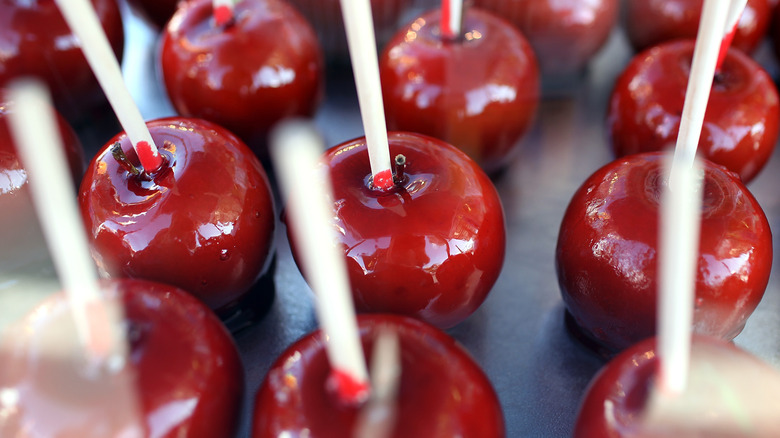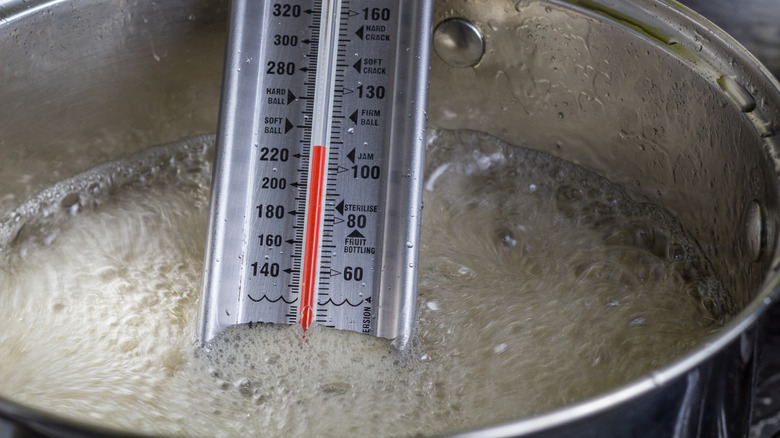What Is The Coating On Candy Apples Really Made Of?
First, let's get one thing clear: Though they're made from the same ingredients, candy apples and caramel apples are not the same. In fact, when candy apples were invented, it wasn't even for consumption. They were created by a New Jersey candy maker who, as the story goes, dipped apples into melted cinnamon candies to make a bright-red decoration for his shop window. He didn't expect people would want to eat the shiny objects.
But eat them people did, to the extent that the candy apple is now an autumnal tradition, alongside its cousin the caramel apple. Both candy and caramel apples are coated in a mixture made by boiling sugar and water into syrup. For caramel apples, though, that syrup is cooked to a relatively low temperature. This means that, after it cools, the coating will be softer and stickier (just one of several criteria by which you should judge a good caramel apple).
Meanwhile, because it's boiled to a higher temp, candy apple coating cools to something harder and more crackly. Candy apples have the added distinction of being bright red, thanks to food coloring, and are sometimes flavored with cinnamon extract. To better understand the difference, you need to know a little about candy making, which is a hot, finicky ordeal that may not be for the faint of heart. From soft caramels to crunchy peppermint sticks, virtually all candy is made by heating sugar and water to such high temperatures that the sugar undergoes a molecular — and maybe even magical — transformation.
How candy apples and caramel apples are made
Once it cools, boiled sugar syrup will have become something fundamentally different than the raw materials that went into it, depending on the temperature it's been cooked to. As a general rule, higher temps lead to harder candies. Candy makers refer to several stages to describe the consistency of the final product.
Since the exact nature of this transformation depends on what temperature the sugar reaches, professionals today rely on thermometers to ensure accurate results. But the language used to describe the stages of candy harkens to a time of a more rudimentary test: dropping bits of molten sugar into water to see what the finished consistency would be. Candy cooked to the "firm-ball" stage — between 245 and 250 degrees Fahrenheit — may become chewy caramels; candy cooked to the "hard-crack" stage (300 to 310 degrees) might get turned into a lollipop. The hard-crack stage is also what the coating for candy apples is cooked to — that's what makes the shell so crisp. Caramel apples, by contrast, are cooked only up to 250 degrees, i.e., the firm-ball stage. Their coating also typically has cream in it, which contributes to a much softer finished product.
In either case, it's time to dip your apple when the coating has cooled slightly but not yet firmed up. Whatever consistency that coating ultimately cools to — whether you're a firm-ball fan or a hard-crack aficionado — you'll have a delicious autumn-appropriate dessert.

